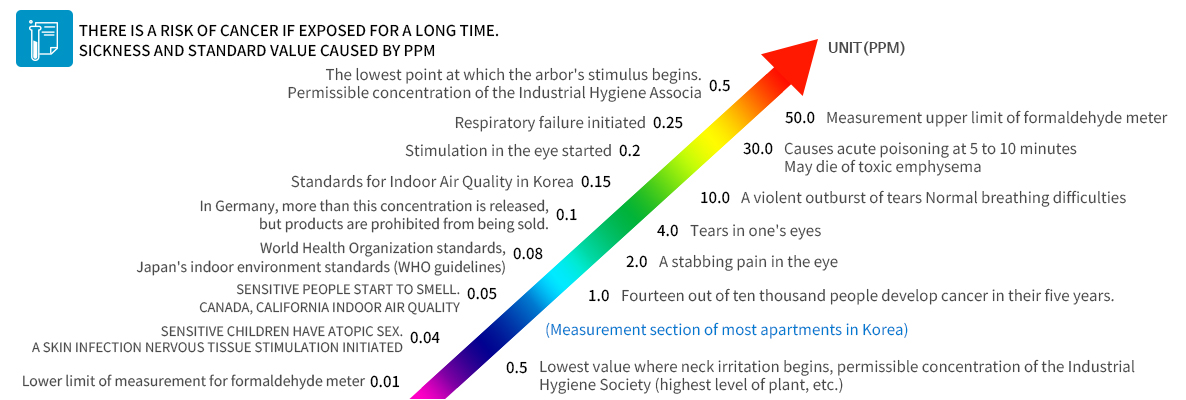

Family Site
What is sick house syndrome?
The newly built house has many chemicals that are harmful to the human body, and the tenants suffer from various diseases such as skin.
In the United States, sick house syndrome, which has been a social problem since the 1980s and Japan in the 1990s,
is an environmental pollution disease created by petrochemical civilization.
New houses are more likely to be exposed to toxic chemicals such as formaldehyde and volatile organic compounds from various building materials such as wallpaper, flooring and paint.
Statistics on Victims and Symptoms of Sick House Syndrome
The Korea Consumer Protection Agency said on July 29 that 72.2% (13 households) of substance-induced
sick house syndrome was found to be higher than foreign standards in 182.2% (13 households) of 18 apartments in the Seoul metropolitan area.
In particular, eight households detected up to three times the amount of formaldehyde than the World Health Organization's recommended standard (0.08 ppm).
In 11 households, total volatility organic compounds of Japan's Ministry of Health, Labor and Welfare recommended standard value (0.4mg / ㎥) were found.
A survey of 457 new apartment tenants found that 36.5% of them had symptoms of sick house syndrome.
Symptoms include tingling or dry eyes (44.8%), neck-related symptoms such as frequent cough (36.4%), skin diseases such as rash and itching (36%),
unknown nasal congestion and runny nose (26.7%), headache and nausea ( 18%), followed by breathing (13.4%). (Hyunyang Newspaper)

Symptoms of Formaldehyde Levels

How to Overcome Bird House Syndrome

Minimize harmful substances
Using environmentally friendly building materials and wooden furniture instead of plate furniture can minimize the release of hazardous substances.
Hazardous Chemical Removal and Treatment